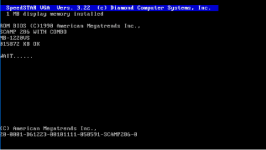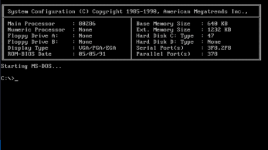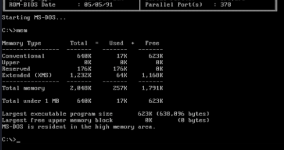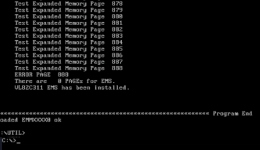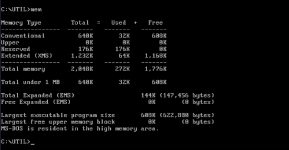sqpat
Experienced Member
The BIOS will size the memory and store the result somewhere, then simply report it when DOS asks for it. Unless you change the reported size, DOS will not know that you just removed some of that memory.
You've got 3 options:
1. Figure out how the BIOS stores the data and update the value. (I couldn't find a location in BDA.)
2. Override "int 15h" to report less XMS memory.
3. Mark the memory as "in use" in DOS itself.
Also, I've checked www.theretroweb.com for this chipset and while there are multiple boards listed, none of them have a BIOS image. If you could dump your BIOS and update the page, that would be helpful to others. Especially if you have the chipset documentation.
Mine's a 20 mhz biostar, called MB-1220VS. BIOS is attached. I feel like I uploaded it at some point to theretroweb but don't remember 100%.
There's also a PCChips m218 up there with a bios which I tried in the past. It's similar but has fewer bus timing options in the BIOS. Theres like 8 different scamp chipsets listed on that site and the boards are spread out amongst them. (Including a IBM PS/2 or PS/2 with a 486)
Hacking mobo BIOS is not something I have ever done, in fact yesterday was my first time trying to write x86 too so it's sort of new for me. I was looking for ASM that was doing I/O writes to the configuration registers but did not make a lot of progress, i found some but it looked like a lot of undocumented behavior was going on too. If it helps to know, the BIOS' behavior is to scan memory at startup, and it automatically sets the value - there's no way to manually edit it in the menu.
EDIT: Uploaded the board update with BIOS on the TRW discord, it wasn't previously uploaded after all...
Attachments
Last edited:

